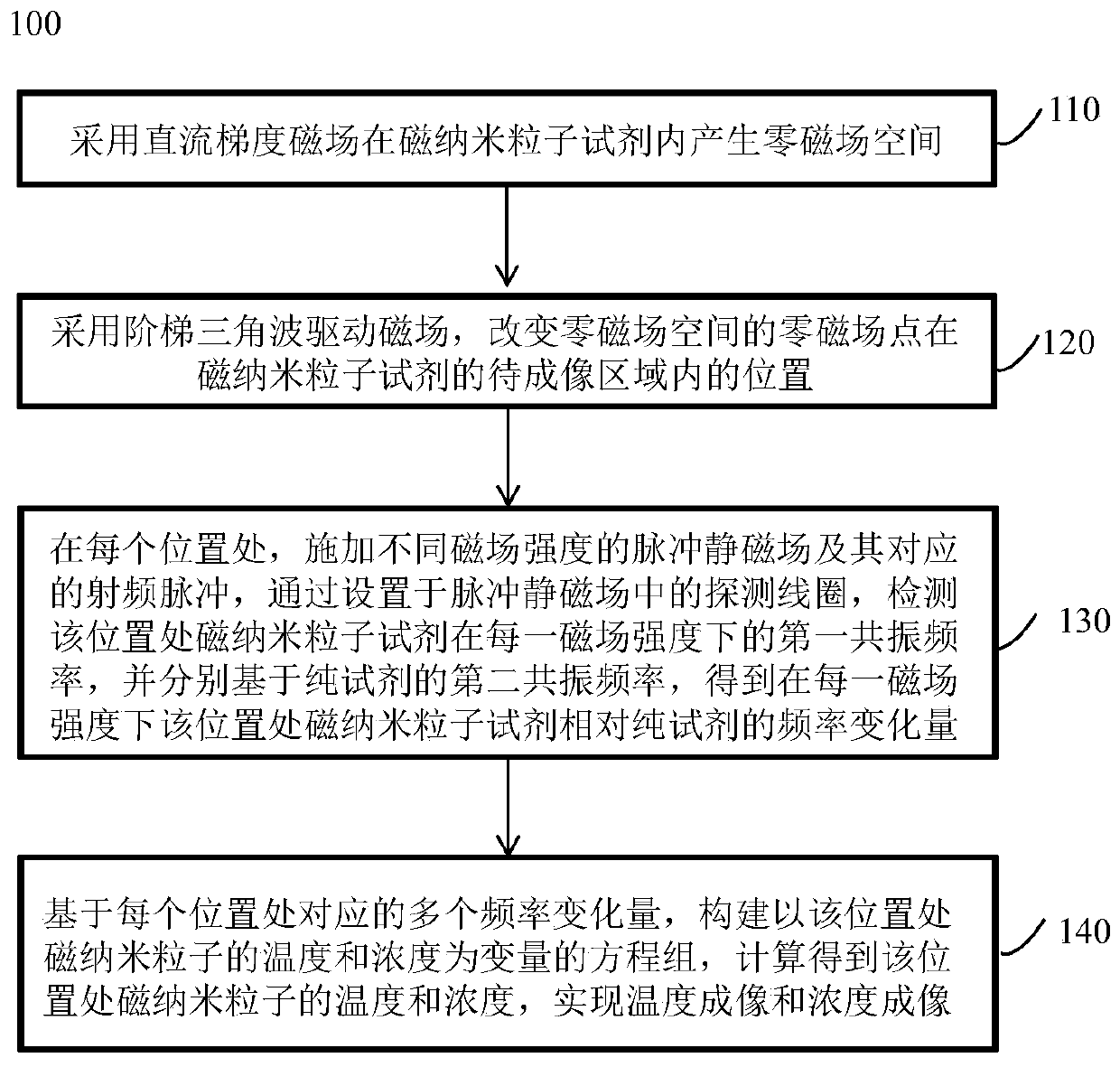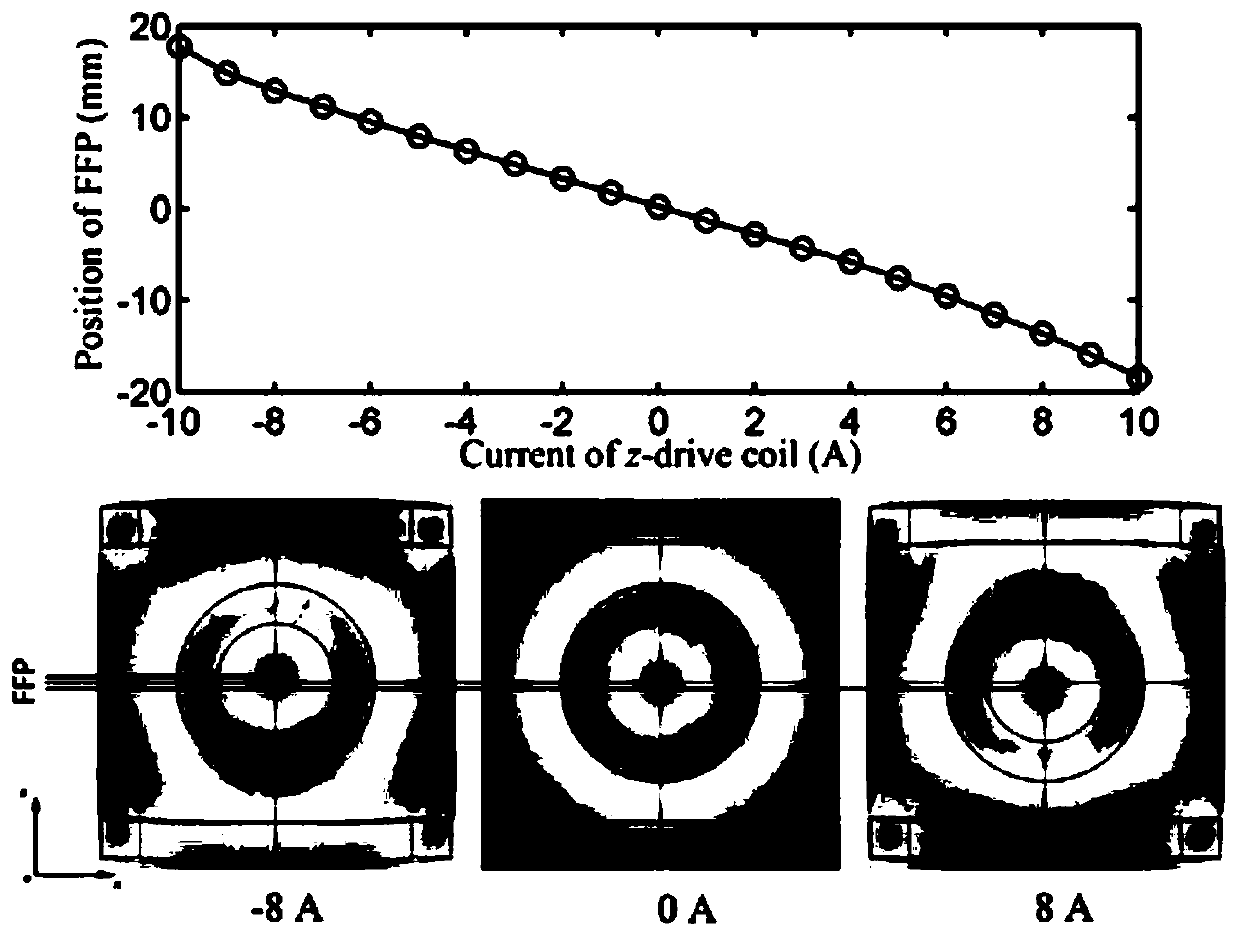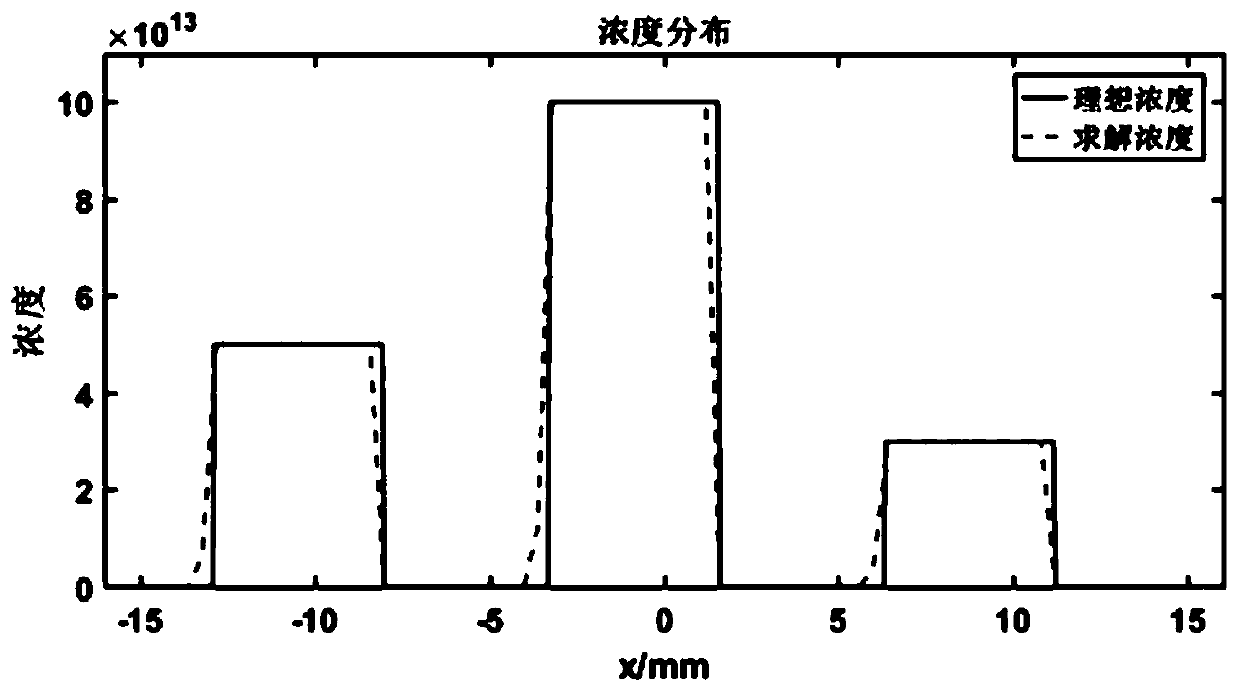A temperature and concentration imaging method of magnetic nanoparticles
A technology of magnetic nanoparticles and imaging methods, applied in the field of nanomaterial testing, can solve the problems of low spatial resolution and low precision, and achieve the effect of improving spatial resolution and high precision of calculation results
- Summary
- Abstract
- Description
- Claims
- Application Information
AI Technical Summary
Problems solved by technology
Method used
Image
Examples
Embodiment 1
[0047] A temperature and concentration imaging method 100 of magnetic nanoparticles, such as figure 1 shown, including:
[0048] Step 110, using a DC gradient magnetic field to generate a zero magnetic field space in the magnetic nanoparticle reagent;
[0049] Step 120, using a stepped triangular wave to drive the magnetic field to change the position of the zero magnetic field point in the zero magnetic field space in the area to be imaged of the magnetic nanoparticle reagent;
[0050] Step 130: At each position, apply pulsed static magnetic fields with different magnetic field strengths and corresponding radio frequency pulses, and detect the magnetic nanoparticle reagent at this position under each magnetic field strength through the detection coil arranged in the pulsed static magnetic field. The first resonant frequency, and based on the second resonant frequency of the pure reagent respectively, the amount of frequency variation of the magnetic nanoparticle reagent rela...
example 2
[0100] Simulation example two (two-dimensional imaging):
[0101] (1) Simulation model and test description:
[0102] In order to study the feasibility and superiority of using magnetic resonance frequency to solve the magnetic susceptibility of magnetic nanoparticles and realize temperature imaging, in a two-dimensional space with a size of 15×15mm and 81×81 pixels, set the pulse static magnetic field strength to 0.05T, 0.06T, the absolute temperature T range is 295-335K, the transverse and longitudinal DC gradient magnetic field gradient G is 8T / m, the particle size of magnetic nanoparticles is 5nm, and the saturation magnetization of magnetic nanoparticles is M s It is 477kA / m, and the imaging simulation analysis of this method is carried out. The concentration imaging simulation results when the absolute temperature T is 300K are as follows: Figure 5 ; The temperature imaging simulation results when the absolute temperature T range of the imaging field of view is 295-33...
Embodiment 2
[0108] A storage medium, in which instructions are stored, and when a computer reads the instructions, the computer is made to execute any one of the above magnetic nanoparticle temperature and concentration imaging methods.
[0109] The relevant technical solutions are the same as those in Embodiment 1, and will not be repeated here.
PUM
| Property | Measurement | Unit |
|---|---|---|
| particle diameter | aaaaa | aaaaa |
| saturation magnetization | aaaaa | aaaaa |
Abstract
Description
Claims
Application Information
 Login to View More
Login to View More - R&D
- Intellectual Property
- Life Sciences
- Materials
- Tech Scout
- Unparalleled Data Quality
- Higher Quality Content
- 60% Fewer Hallucinations
Browse by: Latest US Patents, China's latest patents, Technical Efficacy Thesaurus, Application Domain, Technology Topic, Popular Technical Reports.
© 2025 PatSnap. All rights reserved.Legal|Privacy policy|Modern Slavery Act Transparency Statement|Sitemap|About US| Contact US: help@patsnap.com



